Article
Wandering Wide-Eyed in America, Part 4: The Mid-Later 19th Century
Author(s):
In the latest in his series on photographing his adopted home country, Eric Anderson, MD, discusses the 19th century landmarks he's seen.
America’s earlier days as a nation were arguably its greatest. Yes, later of course it was magnificent — twice in worldwide wars and outstanding in its generosity after the wars ended – but there was something feisty in its bravura beginnings: the country played its start as if unaware it really was only a B movie perhaps represented by a tough snotty-nosed Mickey Rooney. That is why any ingénue photographing what he could discover in this vast sprawling land would have to be absolutely thrilled to be touching – then photographing
—
two of America’s most bewitching treasures: The North Church lantern that set off Paul Revere and the Elkskin diary that William Clark brought back with him to St. Louis.
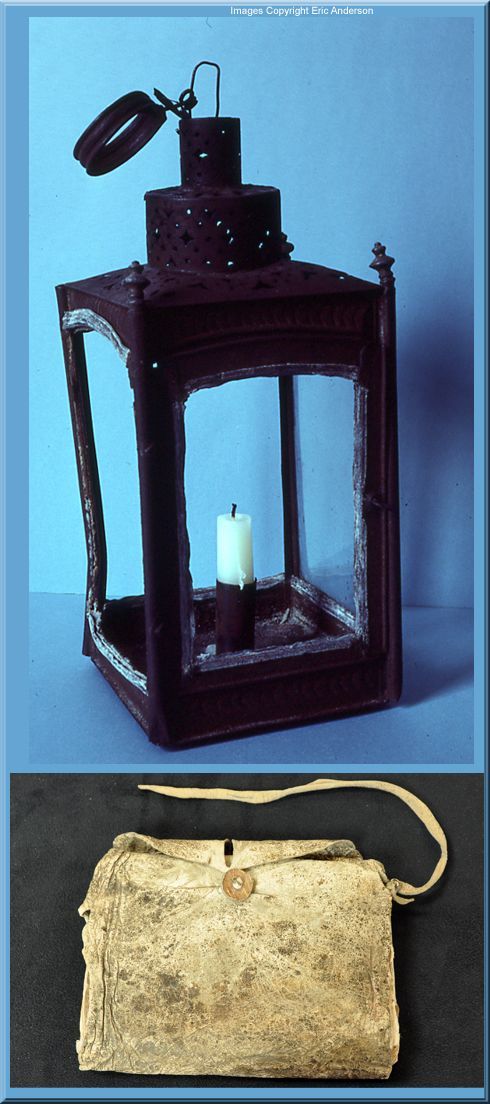
I am ashamed now as to how confrontational I was in getting those two photographs more so the lantern. I had heard only one of the two North Church lanterns had survived and had been given to the Antiquarian House in Concord, MA (now the Concord Museum) by a collector Cummings Davis. I arranged with the museum to drive down the 60 miles from my office in Derry, NH to photograph it for the cover of Massachusetts Physician (later to exist briefly as Physician East).But remembering how complicated it was to take satisfactory photographs through glass even with a polarizing filter, I asked if there was some way to avoid that problem. I was told, Come on down!
I arrived to find two elderly female docents unscrewing a plate glass window and staggering under its weight to place the glass on the floor. They handed me white cotton gloves and I placed the lantern on my blue card background. The effort had exhausted the ladies and the dignity of the occasion prevented my attempting a poor joke such as, May we light the candle?
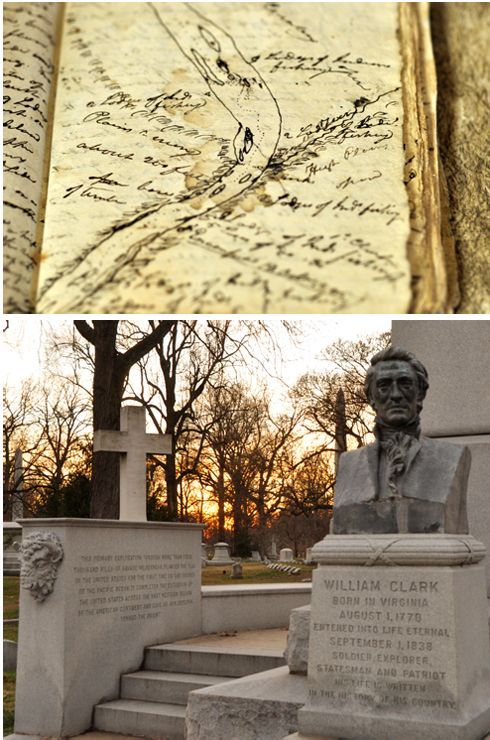
Photographing the Elkskin Diary took time, too. The Clark Family Collection ended up in 1991 in the Missouri History Museum. I got permission to photograph William Clark’s field journal after two attempts and once more I donned a museum’s cotton gloves and touched the very heart of my country’s history. Next day I stood at Clark’s gravesite marveling the country could have doubled in size in 1803 with Jefferson’s Louisiana Purchase and the resultant Westward Expansion.
And wondering how it was possible that the death of Meriwether Lewis at the age of 35, in what Smithsonian magazine has called “the perilous Tennessee trail called the Natchez Trace,” was still a mystery.
It is hard for any later immigrants to get a feel for the middle part of America’s 19th century: Not only were they not there, but the Civil War so dominates this time period there is little to else to engage any newcomers’ passions. Joshua Lawrence Chamberlain of the 20th Maine at the Confederate surrender at Appomattox, wrote “Before us in proud humiliation stood the embodiment of manhood; men whom neither toils and sufferings, nor the fact of death could bend from their resolve…”

The Conestoga wagon trains west across the United States required resolve, too, but not just of American manhood but of the American family. Whether you are standing on wagon wheel ruts from Westward Expansion or tracks from cattle trails makes no difference: it is American Heritage.
You can experience some of this history in (fortunately brief) cattle drives arranged in many dude ranch resorts around Phoenix, AZ pioneered earlier by the Wigwam Resort. I got the feel for this Heritage in Wyoming although the wagon train I was part of had rubber tires on the wagons and we did not cover more than 17 miles in four days.
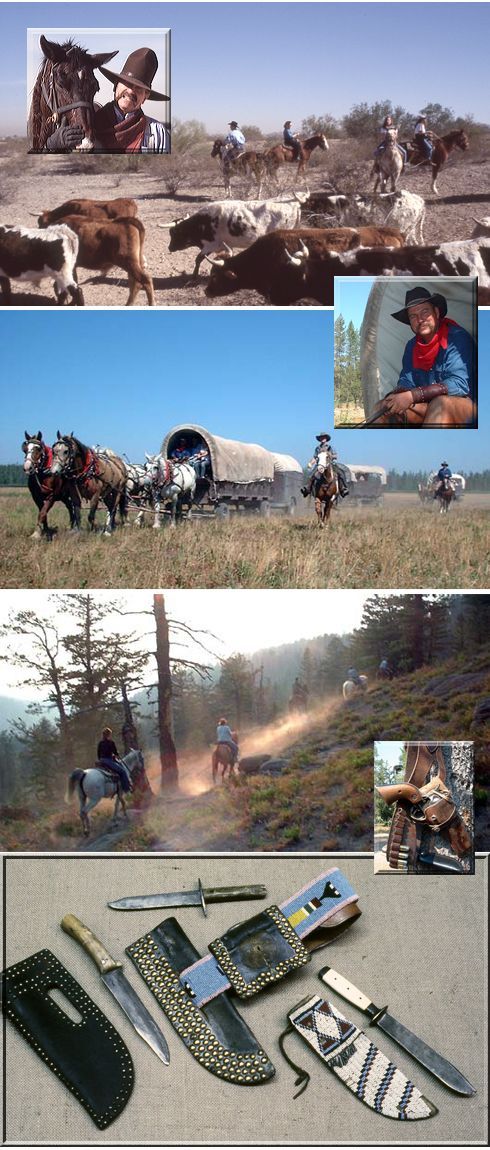
Top image cattle drive near Wigwam Resort. Middle images wagon train in Wyoming. Bottom image: Indian artifacts at Buffalo Bill Historical Center in Cody, WY. I had arranged with the curator to have permission to shoot images but not through glass. We arrived, my late wife, Margaret, and our three children when it opened in the morning and she arranged to come back with them at lunch. She had been my high school sweetheart and knew me well. When she arrived back she thanked Mr. Ball, the curator, saying, “You must be exhausted putting up with my husband for so long. He can be tedious!” He replied, “Well. The only person who has put me to more work was the novelist James Michener when he was writing Images. He asked me to open the Plains Indian section and all its cabinets privately for him and every time I checked throughout the day he was sitting on the floor holding the artifacts and rocking and crooning to himself. So, yes!”
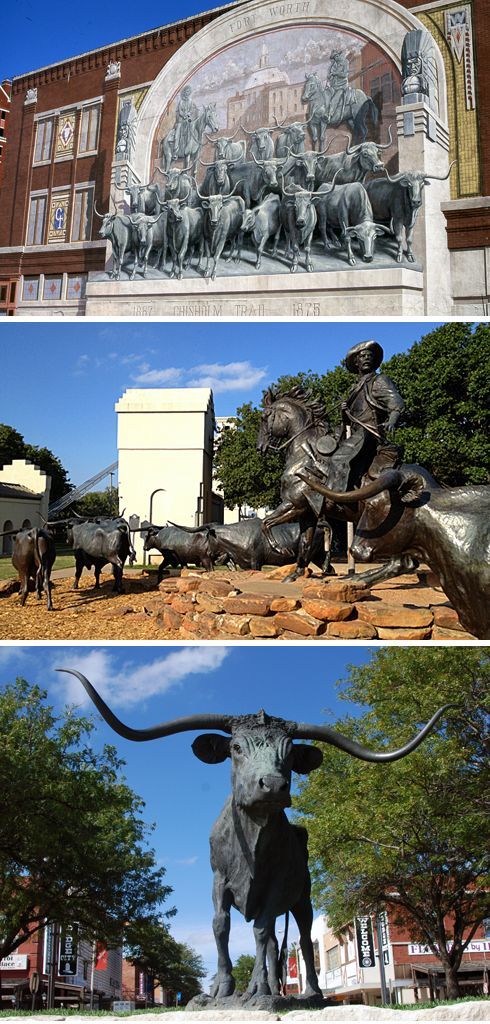
Images top Fort Worth, TX. Center: Waco, TX. Bottom: Dodge City, KS.
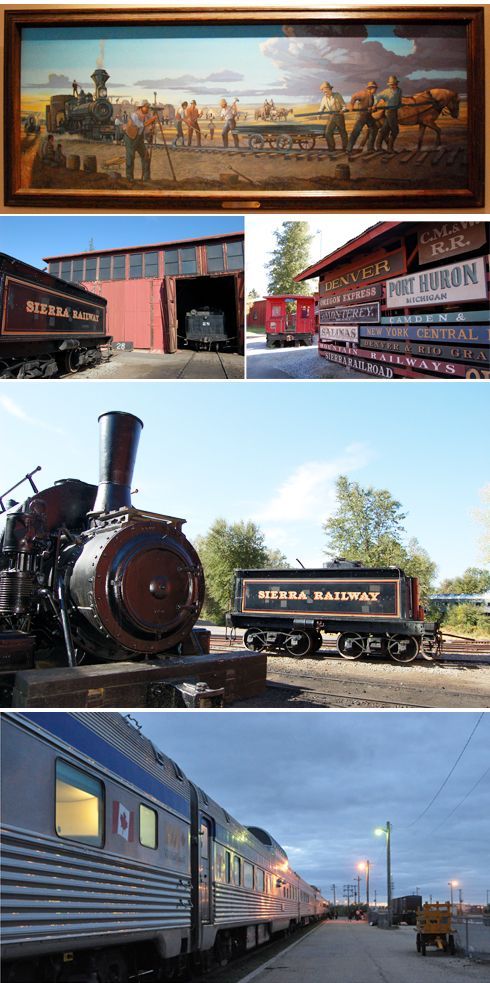
As we move later to the 19th century we leave behind the story of the wagon train and see the arrival of the steam locomotive, the train. Some of our train photographs were shot in Kansas and in the California Gold Rush Country but the lower image was shot taking the VIA train across Canada. It really reinforces the sense of train travel across remote terrain.
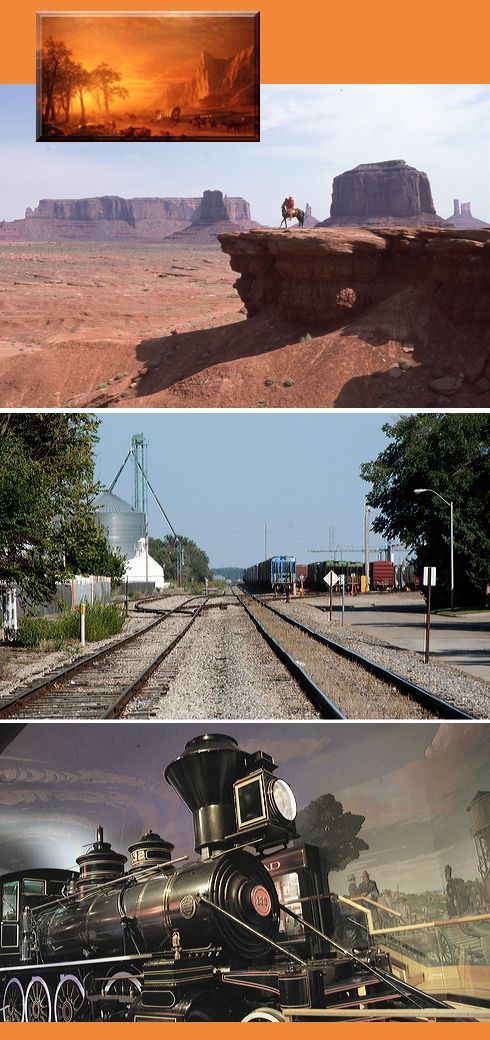
The two lower photographs were also shot in Kansas; the upper one in Monument Valley, the insert one of the vast paintings in Oklahoma City in the Cowboy Hall of Fame

As the trains became more powerful so the homes in America became more permanent and more elegant. Whitehaven, Ulysses S. Grant’s wife’s homestead, and later the Grant family home, now is a National Historic Site easily found about 10 miles southwest of Downtown St. Louis, MO. The house itself was built in 1795. The contrast with the “surviving jewel of the New York Central Railroad fortune,” the Breakers, perhaps the best known of the Newport Mansions, er, cottages is striking. The Vanderbilt 70-room summer estate built in 1895 affects viewers differently: some marvel that income tax was not assessed at this time in American history, others — without ever having read Balzac's 1835 novel Le Père Goriot may nevertheless be aware he felt “behind every great fortune lies a great crime;” and still others may have sympathized at one time with communism on seeing how poorly the world is divided. The Eisenhower Home in Abiline, KS shows visitors a more frugal, less ostentatious homestead and study of Ike’s life really is fascinating. His Presidential Library reminds us: “Dwight David Eisenhower was born the year the US census pronounced the frontier closed and died the year man walked on the moon. In between those milestones he planned and led the greatest amphibious military assault in history…”
But we have not completely left America’s 19th Century. We still have to think a bit more about the colorful Wild West.
Photography by the author
The Andersons, who live in San Diego, are the resident travel & cruise columnists for Physician's Money Digest. Nancy is a former nursing educator, Eric a retired MD. The one-time president of the New Hampshire Academy of Family Physicians, Eric is the only physician in the Society of American Travel Writers. He has also written five books, the last called The Man Who Cried Orange: Stories from a Doctor's Life
.




